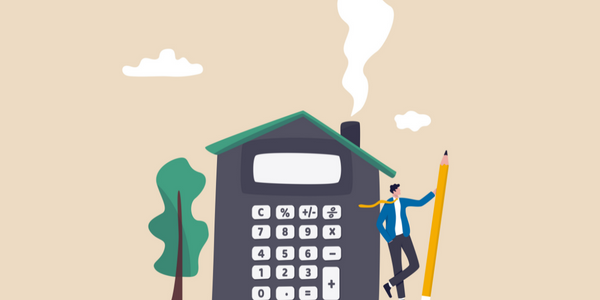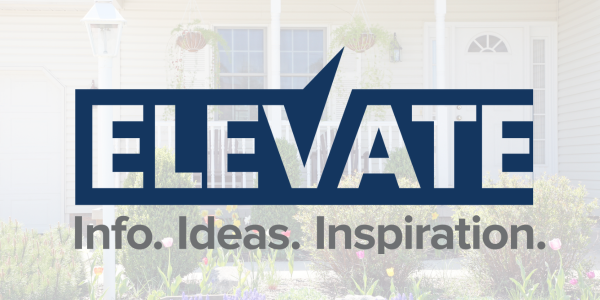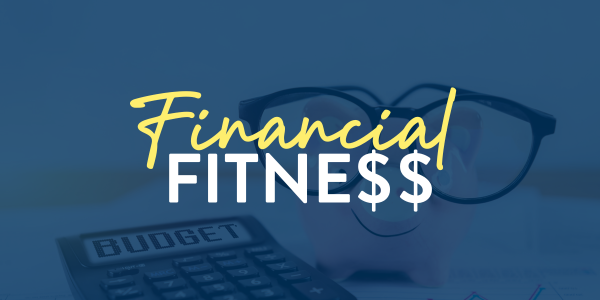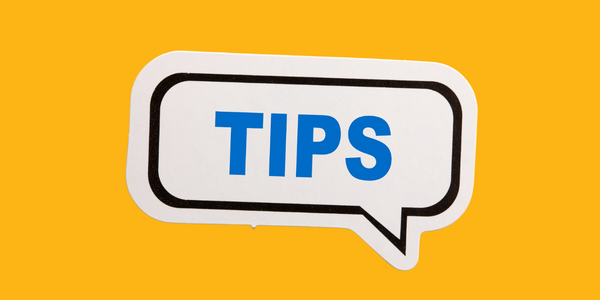
You’ve decided you want to buy a home. You are ready to look at listings, view the next open house, and pick your favorite paint colors—but not so fast! You need to make sure you are financially ready first.
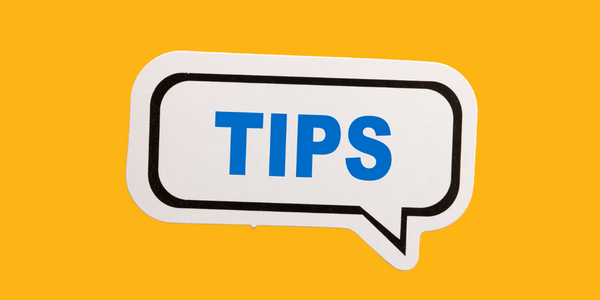
We know…it’s not as much fun as scrolling through online real estate listings. But it is the key to ensuring that you’re able to find a home you love. That starts with finding a mortgage lender and obtaining a home loan—two things we specialize in.
Here are seven financial tips for first-time homebuyers.
1. Get Pre-Approved.
Your homebuying journey should begin with a mortgage lender pre-approval. That way you’ll know in advance how much home you can afford, the monthly payment you’re comfortable with, and what price range you should look at. A pre-approval letter can also help your offer stand out in a competitive market.
What’s the difference between getting pre-qualified versus pre-approved with a lender?
Getting pre-qualified is an informal process where you provide basic information about your financial picture—including your income, assets, credit score, and debts—to a mortgage lender. They can then give you a general estimate of how much mortgage you can afford and the monthly payment amounts.
If you get pre-qualified with APM’s Keys on Time program, you can assure the seller that you will be able to close in 28 days or less.* This gives you a distinct advantage over any other offer without a pre-approval.
When you’re obtaining pre-approval, you’ll fill out an actual mortgage loan application. The lender will verify the information you provide and check your credit. If approved, you’ll get a conditional commitment in writing for a specific loan amount. You will know the exact loan amount you qualify for, what your monthly payment will look like, and how much your taxes and insurance will cost.
When you present a pre-approval letter along with your offer on a home, the seller will know that you have been fully qualified for a mortgage and that you can afford the offer you’ve made.
Your credit score will be important during pre-approval, so make sure it’s as high as you can get it. A credit score over 720 is considered good credit, while a credit score between 750 and 800 is considered excellent credit. A credit score of 600 or higher can still qualify you for a mortgage loan, but it may come at different terms.
Good and excellent credit can often get you better loan terms, but that doesn’t mean you can’t qualify for a loan with a lower score. Your Loan Advisor can help you explore all the options available with your current credit score.
Simple ways to improve your credit can include making payments on time, paying off debt, not applying for new credit, and disputing any errors you find on your credit report.
2. Compare Mortgage Options.
Many different mortgage loan programs are available (conventional loans, FHA, VA, and more), with different qualifying guidelines and even a variation in interest rates. It’s important to know your mortgage loan options because the terms of your loan can ultimately determine how much mortgage you can afford.
- Fixed-rate mortgages: A fixed-rate mortgage loan offers a stable monthly interest rate and payment over the life of the loan. You can select from various loan terms to fit your financial goals. The financial stability of a fixed loan comes at a price, however. Fixed-rate mortgages tend to come at higher initial rates compared with adjustable-rate mortgages.
- Adjustable-rate mortgages: An adjustable-rate mortgage offers a low initial interest rate that is fixed for a short period, generally five to 10 years. After this time, the interest rate can adjust up or down depending on the financial index it’s attached to. An ARM is typically attractive to buyers with short-term goals for their homes or those who want to qualify for larger loan amounts.
Other loan programs—including VA loans, FHA loans, or those offered by the Department of Housing and Urban Development (HUD)—can also have favorable terms if you qualify.
Choosing the right loan program is essential for the next tip: calculating how much mortgage you can afford.
3. Calculate How Much House You Can Afford.
It’s easy to find the specific loan amount you qualify for when you team up with an experienced mortgage lender to get pre-approved and compare all the loan programs. And knowing your price range before you shop eliminates any surprises when you buy a home.
If you aren’t ready yet to sit down with a Loan Advisor to calculate the sales price you can afford, you can use a mortgage loan calculator. This is a good tool to help you compare loan programs and terms.
When calculating your monthly payments, don’t forget to include other home-related items—such as property taxes, homeowners insurance, and HOA dues—in addition to the interest rate. You will also have to budget for some upfront costs, such as closing costs, mortgage points, and home inspections.
4. Look at Your Down Payment Options.
Are you worried about saving enough money for a down payment when you’re in the market to buy a home? One of the best tips for first-time homebuyers is that there are many solutions if you don’t have that much cash on hand.
For instance, APM offers a variety of loan programs that will allow the use of gift funds for a down payment. There are also loan programs that offer low down payments, like FHA loans, and even zero down payment options, like community lending programs and VA loans (for qualified buyers).
Another option is a down payment assistance (DPA) program. APM offers the Pathways DPA Program, which is an in-house down payment assistance program.
There are also several national and regional programs that can assist you with a down payment. This can be in the form of a grant, a forgivable loan, or a low-interest loan that you pay back when you sell your home. Your loan officer is here to walk you through all the options.
One note on low down payment programs: You may have to purchase private mortgage insurance (PMI). PMI is often required for buyers who put less than 20% down on a home. This may be included with your closing costs and come with an additional monthly premium.
5. Budget for Closing Costs.
Speaking of closing costs, these will be due at the end of your homebuying transaction. They generally range from 2% to 5% of the total home purchase price.
Closing costs include the title and escrow fees, recording fees, appraisals and pest reports, home inspections, loan originating and underwriting fees, and initial interest, in addition to PMI, if applicable.
Your loan officer will give you a loan estimate that includes your total payment and closing costs when you apply for a home loan. You will also get a final closing disclosure on these costs before signing the final loan documents.
6. Do Your Research.
Buying a house is a major investment, so you want to be as educated as possible. A trusted mortgage lender can help walk you through the financial aspects of your purchase—including your monthly payment—but you need other professionals in your corner as well.
It’s a good idea to interview a few real estate agents to find one that is a good fit for you. You want an agent with a good track record who has worked in your desired area. It’s also great if their communication style matches your own. Above all else, you want an honest, trustworthy, and transparent agent who will advocate for you.
Another piece of your research should include defining what you are looking for in a home. Make a list of all the must-have and deal-breaker items, as well as some of the nice-to-haves that could factor into your decision. An open kitchen might be a plus, but perhaps a master bedroom on the second floor just won’t work for your needs. The more information you have, the easier it is for real estate agents to do their job and find the homes you’ll love.
7. Stay the Course.
Once you begin the loan process, be sure to avoid making changes that could affect your job, your income, or your credit. Your mortgage lender approved your loan amount based on factors like your income, assets, debts, and credit score at the time your loan application was submitted.
Right before your loan closes, these factors will be verified to ensure that they’re all still accurate. If you change jobs, become self-employed, make a large purchase, or open a new credit line, you may have to get requalified, starting the process all over.
You’ll also want to wait until your loan closes and the home is officially yours before shopping for new furniture—or a boat for that RV parking spot in your new driveway.
Hopefully these tips for the first-time homebuyer have given you some perspective on what to do—and not to do—as you buy a home. You can get there faster by partnering with an experienced APM Loan Advisor who can help you understand the process, ensuring that you make the right moves along the way.
*Keys on Time™ program not available in Oregon. 30-day commitment for VA loans.




